 Over the last four books, we’ve explored the importance of our bodies and imagination in forming kingdom habits (Desiring the Kingdom), ways of integrating our faith and everyday work (Kingdom Calling), the importance of community in growing up in Christ and reaching out in mission (Community & Growth), and how we should live our kingdom story as ‘true’ in an age of conflicting empires (Colossians Remixed). Each fortnightly gathering we’ve shared in the combination of rich liturgy (Taize songs, Northumbrian prayers, creative Bible reading), open discussion, reflection on art, and the designing of rich practices and habits to reinforce our identity and calling in Christ.
Over the last four books, we’ve explored the importance of our bodies and imagination in forming kingdom habits (Desiring the Kingdom), ways of integrating our faith and everyday work (Kingdom Calling), the importance of community in growing up in Christ and reaching out in mission (Community & Growth), and how we should live our kingdom story as ‘true’ in an age of conflicting empires (Colossians Remixed). Each fortnightly gathering we’ve shared in the combination of rich liturgy (Taize songs, Northumbrian prayers, creative Bible reading), open discussion, reflection on art, and the designing of rich practices and habits to reinforce our identity and calling in Christ.
In our first cycle for 2017 (starting Thursday 2nd February), and making a long awaited switch from argumentative essays to a sweeping narrative, we turn to explore the struggle for faith in a world marked by suffering and God’s silence:
How can we imitate Christ as witnesses
in a culture rejecting Christianity?

Order the Picador 2016 edition online here.
Our conversation partner is Shūsaku Endō (1923-1996), arguably the greatest Japanese novelist of his time, and author of one of the twentieth Century’s most renowned books, Silence. The impact of this book reverberates into the present, challenging, inspiring, infuriating and humbling countless modern writers (see here for nearly 50 such reflections).
 Endō, a Japanese Catholic, was no stranger to occupying the place of the Other: too foreign, too Oriental, to be understood by the West, and too Christian, too iconoclastic–not to mention insufficiently Buddhist–to be accepted at home. His work of historical fiction is set in 1635 as Portuguese missionaries seek to proselytise the Japanese during a time of extreme persecution. Following rumours of their leader (Ferreira) abandoning his faith, two younger Jesuits (Fr. Rodrigues and his companion Fr. Francisco Garrpe) head to Japan to uncover the truth and shore up the struggling converts. How will this collision between cultures resolve, as each grapples with the other? Will Rodrigues and Garrpe, too, betray their Lord, trampling his crudely formed icon (fumie) underfoot and committing the sin of apostasy?
Endō, a Japanese Catholic, was no stranger to occupying the place of the Other: too foreign, too Oriental, to be understood by the West, and too Christian, too iconoclastic–not to mention insufficiently Buddhist–to be accepted at home. His work of historical fiction is set in 1635 as Portuguese missionaries seek to proselytise the Japanese during a time of extreme persecution. Following rumours of their leader (Ferreira) abandoning his faith, two younger Jesuits (Fr. Rodrigues and his companion Fr. Francisco Garrpe) head to Japan to uncover the truth and shore up the struggling converts. How will this collision between cultures resolve, as each grapples with the other? Will Rodrigues and Garrpe, too, betray their Lord, trampling his crudely formed icon (fumie) underfoot and committing the sin of apostasy?
For Dave’s thoughts on why Silence is so timely to read in Open Book 2017, read on.
For the key details and dates, skipping the essay, scroll down below the second +++!
+++
This book is timely for two reasons.
 First, our times increasingly resemble the novel’s setting, thus posing questions that we must answer in our own missional context. This is not to play the victim and suggest that Aussie Christians experience persecution akin to Japanese Christians during the Edo Period (1603-1868). This was a time when Japan turned inward to forge a unified national identity set over and against the colonising other, especially its religious symbols which challenged ultimate allegiance to the Land of the Rising Sun. To be sure, most Aussie Christians barely feel a twinge of persecution, largely disconnected from the pain in the global body of Christ as it faces widespread “Christianophobia“.
First, our times increasingly resemble the novel’s setting, thus posing questions that we must answer in our own missional context. This is not to play the victim and suggest that Aussie Christians experience persecution akin to Japanese Christians during the Edo Period (1603-1868). This was a time when Japan turned inward to forge a unified national identity set over and against the colonising other, especially its religious symbols which challenged ultimate allegiance to the Land of the Rising Sun. To be sure, most Aussie Christians barely feel a twinge of persecution, largely disconnected from the pain in the global body of Christ as it faces widespread “Christianophobia“.
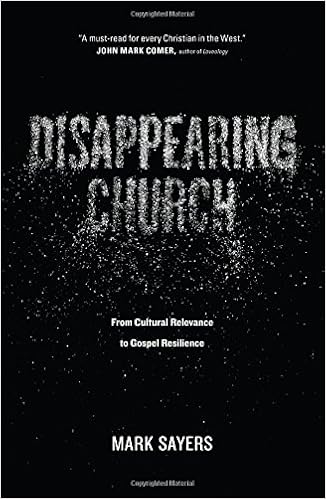 Nonetheless, this anti-Christian sentiment has settled into the western church’s heartland. Our once familiar home is turning “hostile“, with anti-Christian bias increasingly prevalent. Many followers of Jesus are lost for how to respond to their faith coming under attack. The “Christian Century” of peacefully coexisting with and playing chaplain to the elites, appealing to the cultured despisers, is long gone. Instead, leading thinkers call the church to “prepare” for persecution–to follow Jesus outside the gates of institutional power, and to embrace the ignominy of being the misunderstood Other who yet speaks truth to power and leads with sacrificial love (Heb 13:12-16). Facing political protectionism and resurgent nationalism (think Brexit, Trump, One Nation) and a supposedly unified “secular” identity that marginalises faith as the populace “loses [its] religion” (even amidst unprecedented plurality), the “disappearing church” of contemporary Australia must change goals, “from cultural relevance to gospel resilience”.
Nonetheless, this anti-Christian sentiment has settled into the western church’s heartland. Our once familiar home is turning “hostile“, with anti-Christian bias increasingly prevalent. Many followers of Jesus are lost for how to respond to their faith coming under attack. The “Christian Century” of peacefully coexisting with and playing chaplain to the elites, appealing to the cultured despisers, is long gone. Instead, leading thinkers call the church to “prepare” for persecution–to follow Jesus outside the gates of institutional power, and to embrace the ignominy of being the misunderstood Other who yet speaks truth to power and leads with sacrificial love (Heb 13:12-16). Facing political protectionism and resurgent nationalism (think Brexit, Trump, One Nation) and a supposedly unified “secular” identity that marginalises faith as the populace “loses [its] religion” (even amidst unprecedented plurality), the “disappearing church” of contemporary Australia must change goals, “from cultural relevance to gospel resilience”.
Nothing in this would surprise Endō or other such wise students of mission’s history. Fr. Francis Xavier, Jesuit missionary extraordinaire, ushered in what looked like an Oriental Christian Century, with his inquisitive welcome by Japan’s elites in 1549. And yet, within fifty years, under feudal warlord and Shogun strong man Toyotomi Hideyoshi, Christianity–with its foreign religious icons carried on “black ships” of commerce, backed by military force–was anathema, understood as a threat to fledgling national identity. Missionaries now risked ridicule, even torture and martyrdom, and indigenous believers retreated as “hidden Christians”. Should they just give up on Japan? Does the gospel simply not grow in this soil? And yet, the incarnation and way of Jesus models that God can take on flesh in every time and place, embracing its particularities–contextualisation without compromise (Mt 28:18-20). “If Christianity cannot be true in every culture, then it cannot be true at all.” How Portuguese and Japanese believers responded was a test of Christianity’s integrity as a whole.
 We must, however, count the cost. Incarnation always leads to the cross.
We must, however, count the cost. Incarnation always leads to the cross.
As Alissa Wilkinson writes in her powerful review of Silence, “For Endō, there are no easy routes to salvation; a person’s body—its ethnicity, its weaknesses, its susceptibility to pain and desire—is as much his link to the life and sufferings of Christ as a person’s soul.”
This is the paradox of faith: to save your life, you must first lose it (Mt 16:25). How, then, can fallen Christians imitate the incarnation, and witness to a culture rejecting Christianity? Can we do so without suffering? Will our efforts end better than Peter, or Judas? And how will we be sustained for this impossible mission when the God who sends us apparently stands by, watching in silence?
Endō will not allow us to see this as a “culture war”, a battle between them and us. Surely, there is much that the story’s antagonists and inquisitors, especially former Christians like Kichijirō and Inoue, rightly reject in Christianity as a religion and colonial power–as Japanese Pastor Marre Ishii explores in his review of Silence? It is difficult to distinguish to what degree they would have us wrongly trample underfoot Christ himself as rebels idolatrously set against the Lord of All (Ps 2; Mt 5:10-12; Lk 10:16; Jn 15:18-25), and rightly destroy our crude images of Christ reified in broken institutional religion that is prone to hypocrisy, “cross[ing] land and sea to make one convert, and then turn[ing] that person into twice the child of hell you yourselves are” (Mt 23:13-15). Like Jesus himself, Endō is calling the church to “cleanse the temple” (Mt 21:12-17) by evicting what truly is not of God. Only in humility can we witness to a post-Christian culture.
 Recapping this first point, then, our times increasingly resemble the novel’s setting. Christianity, once popular and even powerful, is on the outer, and a nation “come of age” is prone–with some good reason–to marginalise and even persecute the Church as a threat to the common (read “secular”) good. As missiologist Lesslie Newbigin argues powerfully (see Truth to Tell, Foolishness to the Greeks, and The Gospel in a Pluralist Society), however, most Christians have not yet recognised that we are the other, the foreigner, in our own home. We, the increasingly “hidden Christians”, are missionaries to a post-Christendom culture. And, as such, the novel Silence is a poignant conversation partner, raising questions of witness, power and colonialism, suffering and doubt, persecution and apostasy. Given that Christ’s Pieces is called to explore what it means to faithfully follow Christ at this cultural cross-road, this book is ripe for our reading together.
Recapping this first point, then, our times increasingly resemble the novel’s setting. Christianity, once popular and even powerful, is on the outer, and a nation “come of age” is prone–with some good reason–to marginalise and even persecute the Church as a threat to the common (read “secular”) good. As missiologist Lesslie Newbigin argues powerfully (see Truth to Tell, Foolishness to the Greeks, and The Gospel in a Pluralist Society), however, most Christians have not yet recognised that we are the other, the foreigner, in our own home. We, the increasingly “hidden Christians”, are missionaries to a post-Christendom culture. And, as such, the novel Silence is a poignant conversation partner, raising questions of witness, power and colonialism, suffering and doubt, persecution and apostasy. Given that Christ’s Pieces is called to explore what it means to faithfully follow Christ at this cultural cross-road, this book is ripe for our reading together.
 Mercifully shorter than my first rationale, a second reason this book is timely to discuss is that the much anticipated movie rendering of Silence by Martin Scorsese has come! Thirty years in gestation since first reading, this master director describes its production as his own “pilgrimage”. It’s set to be released in Brisbane on February 16, 2017. God willing, we’ll watch it together on Thursday March 2. Obviously watching the movie, mid cycle in Open Book, comes with a complete “spoiler alert”! That said, his adaptation is receiving critical acclaim by the religious and secular alike, and will stimulate great discussion as these tortured characters lift off the page, at once enfleshing and challenging the images in our mind’s eye.
Mercifully shorter than my first rationale, a second reason this book is timely to discuss is that the much anticipated movie rendering of Silence by Martin Scorsese has come! Thirty years in gestation since first reading, this master director describes its production as his own “pilgrimage”. It’s set to be released in Brisbane on February 16, 2017. God willing, we’ll watch it together on Thursday March 2. Obviously watching the movie, mid cycle in Open Book, comes with a complete “spoiler alert”! That said, his adaptation is receiving critical acclaim by the religious and secular alike, and will stimulate great discussion as these tortured characters lift off the page, at once enfleshing and challenging the images in our mind’s eye.
With this movie release (synopsis here; trailer here) has come great interest and a flurry of responses. There have been occasional detractors, such as Roy Peachey from First Things. He questioned both Scorsese and Endō’s telling as rationalising an escape from the suffering of the cross in the name of contextualisation and protection of fellow believers. Most reviewers, however, have praised their constraint, avoiding preaching and instead raising pivotal issues for our at once secular and religious age. As Stephanie Zacharek from Time commented, this story “maps the space between faith and doubt …. Silence makes no clear value judgment between belief and doubt. It’s a movie in the shape of a question mark, which may be the truest sign of the cross.” Personally, this story of cross-shaped witness in a post-Christian context reminded me of Brendan Gleeson’s 2014 characterisation of Irish Priest, Fr. James, in the similarly celebrated and poignant movie, Calvary (Trailer here).
If you’re wanting to delve deeper, these are the best reviews of Silence I’ve read:
- Alissa Wilkinson on Vox: “Silence is beautiful, unsettling, and one of the finest religious movies ever made. Martin Scorsese’s film keenly understands Shūsaku Endō’s novel and challenges believer and nonbeliever alike.”
- Simon Smart (from Australia’s Centre for Public Christianity [CPX], on ABC: “How the pain of Scorsese’s Silence mirrors the ‘hard and bitter agony’ of Christmas.”
- Brett McCracken on Christianity Today: “Scorsese’s Silence asks what it really costs to follow Jesus.”
 The particular version of the novel we’ll use is the 2016 edition by Picador (available on Amazon.com here), translated by William Johnston, with a foreword by movie director Martin Scorsese. Their discussion guide is most helpful, posing piercing literary and theological questions with which we will grapple. The companion reflections from nearly 50 authors, responding to Silence, are likewise profound.
The particular version of the novel we’ll use is the 2016 edition by Picador (available on Amazon.com here), translated by William Johnston, with a foreword by movie director Martin Scorsese. Their discussion guide is most helpful, posing piercing literary and theological questions with which we will grapple. The companion reflections from nearly 50 authors, responding to Silence, are likewise profound.
We will also draw from a companion book that closely follows Endō’s novel, written by the wonderful Japanese artist and theologian, Makoto Fujimura, with a foreword by Philip Yancey, entitled Silence and Beauty: Hidden Faith Born of Suffering. Fujimura’s companion website has interviews, art-work, and his own discussion guide. For Yancey’s chapter on Shūsaku Endō (“A Place for Traitors,” in his Soul Survivor: How My Faith Survived the Church [London: Hodder & Stoughton, 2007], 261-279), see here. Yancey shares how Endō’s attention to the suffering image of Christ–“the Jesus of reversal” (268)–restored Yancey’s faith, after rejecting the unreality of Christian triumphalism from his fundamentalist youth.
+++
Over 9 fortnightly Thursday sessions (Feb 2 – May 25) we will dialogue with Endō and each other, learning how to realistically imitate Christ’s incarnation as his witnesses, in our post-Christendom (post-Christian?) Australian culture.
Check out the calendar below for key dates, and pdf links to carry you through until you get your own copy of the book (purchase asap on Amazon.com or via Picador).
We have a soft-start from 6:30pm–feel free to rock up early and eat your dinner or share a cup of tea. At 7pm sharp we get into the night, finishing each night by 9pm with supper together and an unrushed chat over coffee. OPEN BOOK includes some basic spiritual practices and prayer, before unpacking the pre-reading scheduled for that night.
For each week, it helps to think through how the reading provokes you in 4 ways:
1) Questions: what didn’t make sense?
2) Challenges: what did you think was wrong?
3) Implications: if this is true, what does it mean for being the church today?
4) Applications: what does it look like for you to live out of this vision as part of the community of God?
OPEN BOOK, THURSDAYS 7PM | Shūsaku Endō’s SILENCE (S)
Feb 2 | Silence Part 1, pp. vii-10 (27pp): Scorsese’s Foreword (vii-ix), Translator’s Preface (xi-xxiv), Endō’s Prologue (1-10)
[Yancey’s chapter on Shūsaku Endō, “A Place for Traitors,” pp261-279 in his Soul Survivor: How My Faith Survived the Church (London: Hodder & Stoughton, 2007), is also great introduction.]
Feb 16 | S Part 2, pp. 11-47 (37pp): Ch 1 (11-21), Ch 2 (22-29), & Ch 3 (30-47)
*Wednesday* Mar 1 | Silence Movie
Open Table dinner on Friday March 10 … Theme of LOVE
Mar 16 | S Part 3, pp. 48-83 (36pp): Ch 4 (48-83)
Mar 30 | S Part 4, pp. 84-107 (24pp): Ch 5 (84-107) [cancelled due to Debbie’s Cyclone 😦 ]
Apr 13 | S Part 5, pp. 108-128 (21pp): Ch 6 (108-128) + revisit pp. 84-107 (Ch 5)
Apr 27 | S Part 6, pp. 129-164 (36pp): Ch 7 (129-164)
May 11 | S Part 7, pp. 165-189 (25pp): Ch 8 (165-183), & Ch 9 (184-189)
May 25 | S Part 8, pp. 190-212 (23pp): Dinner celebration/remembering of all practices (ppnt/pdf recap) and consolidation of our response to the central question of the series: “How can we imitate Christ as witnesses in a culture rejecting Christianity?” (Ch 10 (190-204), & Appendix (205-212). We’ll provide soup & bread (7pm sharp); bring dessert if able.
Open Table dinner on Friday June 9 … Theme of TRUTH (7 for 7:30pm start)
July 27 | Restart semester 2 with The Benedict Option on the question, “What practices preserve our witness [& identity] in a post-Christian context?”
Hope to see you there!
 In our second cycle for 2020, we dialogue with Charles Ringma’s book “Finding Naasicaa” (2007) and ask:
In our second cycle for 2020, we dialogue with Charles Ringma’s book “Finding Naasicaa” (2007) and ask: As Charles writes, this book is dedicated to “a new generation: bearers of hope for a newer tomorrow; a past generation of parents: whose spiritual faith fractured with the collapse of Christendom; and an older generation of grandparents: whose life is marked by anxious prayer.”
As Charles writes, this book is dedicated to “a new generation: bearers of hope for a newer tomorrow; a past generation of parents: whose spiritual faith fractured with the collapse of Christendom; and an older generation of grandparents: whose life is marked by anxious prayer.”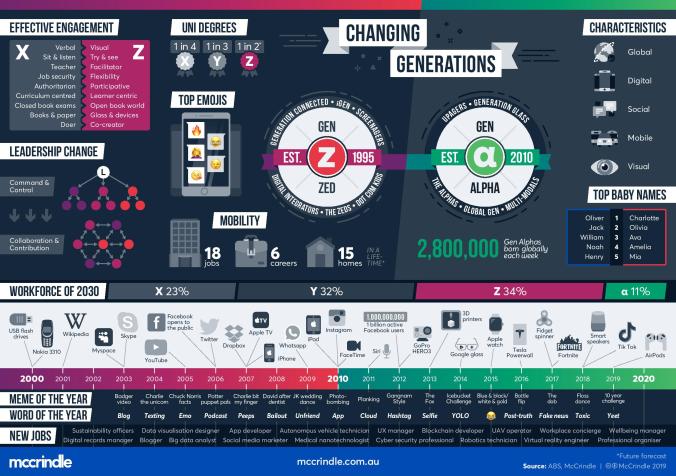

 On the process of individuation from adolescence to becoming an (emerging) adult who owns their own faith critically, see Arnett (2004: Emerging Adulthood), Smith and Snell (2009: Souls in Transition), Lewis (2013: Individuation and Faith Development)
On the process of individuation from adolescence to becoming an (emerging) adult who owns their own faith critically, see Arnett (2004: Emerging Adulthood), Smith and Snell (2009: Souls in Transition), Lewis (2013: Individuation and Faith Development)
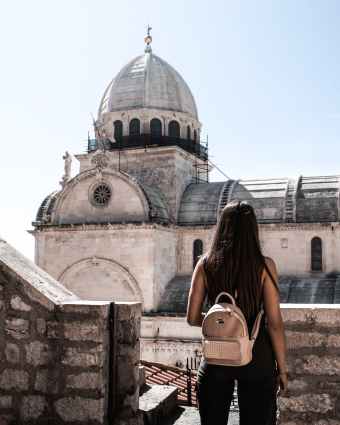 For each week, it helps to think through how the reading provokes you in 4 ways:
For each week, it helps to think through how the reading provokes you in 4 ways:









 Christ’s Pieces pillar, Noel Payne, is the driving force behind this series. He first discovered this book,
Christ’s Pieces pillar, Noel Payne, is the driving force behind this series. He first discovered this book,  As we journey through this series, you may find the following sites and sources helpful to deepen your understanding:
As we journey through this series, you may find the following sites and sources helpful to deepen your understanding:

 September 12 | TL II,
September 12 | TL II, 

 Here’s a bit more on the subject:
Here’s a bit more on the subject:
 If a “hoary head” isn’t your thing, then perhaps this modern rendering says it best: “Silver hair is a beautiful crown found in a righteous life” (Proverbs 16:31).
If a “hoary head” isn’t your thing, then perhaps this modern rendering says it best: “Silver hair is a beautiful crown found in a righteous life” (Proverbs 16:31).
 I’m looking forward to hearing your stories as we gather for this open table. In the spirit of vulnerability and priming the pump, here is a foretaste of what I hope to share, about my favourite ‘wise elder’, who was ‘promoted to glory’ more than a few years ago. It’s a reflection I first wrote as the preface to my Nanna’s poetry collection, later published as a blog on
I’m looking forward to hearing your stories as we gather for this open table. In the spirit of vulnerability and priming the pump, here is a foretaste of what I hope to share, about my favourite ‘wise elder’, who was ‘promoted to glory’ more than a few years ago. It’s a reflection I first wrote as the preface to my Nanna’s poetry collection, later published as a blog on 
 Recently I was jogging through Noosa National Park with a Canadian friend, pointing out the great diversity and character in the surrounding trees. In place of uniform stands of pines were paperbarks and gnarled gumtrees. Nanna quickly came to mind. Trees like these were features in many of her paintings, and her poems. Nanna loved nature. She used to tell tales of fairies in the garden, replete with intricate details of what each would wear and how they would move. The banksia bush had a larger-than-life personality in her imagination. At the least opportune time—like when picking me up from a friend’s place—Nanna would quietly slip out of the conversation, leaving us all wondering where she’d gone. After looking around, we would find Nanna on her knees, crawling through the garden bed. She was scraping off bits of bark from the base of a gumtree—“It’s for my bark paintings,” she explained. For Nanna, this was normal.
Recently I was jogging through Noosa National Park with a Canadian friend, pointing out the great diversity and character in the surrounding trees. In place of uniform stands of pines were paperbarks and gnarled gumtrees. Nanna quickly came to mind. Trees like these were features in many of her paintings, and her poems. Nanna loved nature. She used to tell tales of fairies in the garden, replete with intricate details of what each would wear and how they would move. The banksia bush had a larger-than-life personality in her imagination. At the least opportune time—like when picking me up from a friend’s place—Nanna would quietly slip out of the conversation, leaving us all wondering where she’d gone. After looking around, we would find Nanna on her knees, crawling through the garden bed. She was scraping off bits of bark from the base of a gumtree—“It’s for my bark paintings,” she explained. For Nanna, this was normal. Perhaps in the title to her final collection of poems we can find the answer: Rainbows in the Tears. For when love looks through tears of pain, a vision of hope will emerge.
Perhaps in the title to her final collection of poems we can find the answer: Rainbows in the Tears. For when love looks through tears of pain, a vision of hope will emerge. Nell was known as a woman of faith. But this was not “faith in faith” or some subjective impulse to trust beyond reason. Not at all. Instead, my Nanna trusted in the one true God, who was able to take the worst suffering, and the greatest injustice, and turn it into new grace and hope for all humanity. At the Bible’s climax we see God Himself in the person of Jesus, left high and dry as He opened His arms to embrace a world gone awry. Love is cruciform. And love is passionate, where passion literally means to “suffer with.” So Nanna had faith in the God with scars. When Nanna looked through tear stained eyes at the resurrected Christ, she knew all her sad stories would one day come untrue. And the result was art fuelled by hope.
Nell was known as a woman of faith. But this was not “faith in faith” or some subjective impulse to trust beyond reason. Not at all. Instead, my Nanna trusted in the one true God, who was able to take the worst suffering, and the greatest injustice, and turn it into new grace and hope for all humanity. At the Bible’s climax we see God Himself in the person of Jesus, left high and dry as He opened His arms to embrace a world gone awry. Love is cruciform. And love is passionate, where passion literally means to “suffer with.” So Nanna had faith in the God with scars. When Nanna looked through tear stained eyes at the resurrected Christ, she knew all her sad stories would one day come untrue. And the result was art fuelled by hope.
 In our second cycle for 2019 (starting Thursday 23rd May), we stare a half-century long
In our second cycle for 2019 (starting Thursday 23rd May), we stare a half-century long 


 At another level, it behooves any Christian who claims to follow the
At another level, it behooves any Christian who claims to follow the 
 And yet, a growing number of
And yet, a growing number of 
 How, then, can we take sides when
How, then, can we take sides when 
 Over four fortnightly sessions starting Thursday 23rd May (schedule below), editors
Over four fortnightly sessions starting Thursday 23rd May (schedule below), editors 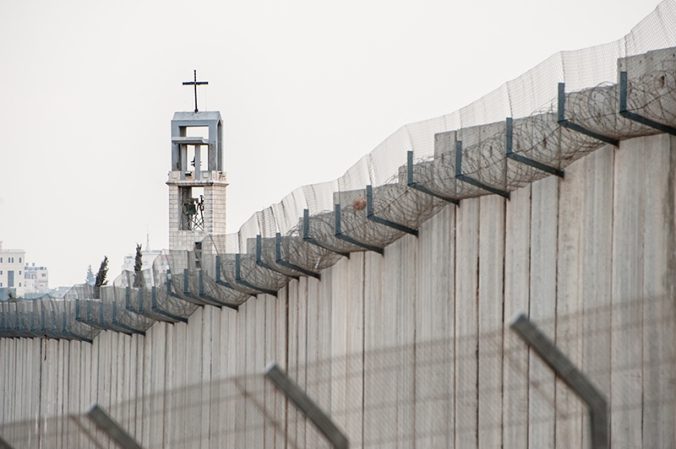

 Clearly, this book amplifies the less heard voice of Palestinian Christians. This shouldn’t, however, be taken as a one-eyed view of the world. No less a scholar than Old Testament Professor and former theological chair for the evangelical Lausanne global evangelisation movement, Dr. Chris Wright, offers
Clearly, this book amplifies the less heard voice of Palestinian Christians. This shouldn’t, however, be taken as a one-eyed view of the world. No less a scholar than Old Testament Professor and former theological chair for the evangelical Lausanne global evangelisation movement, Dr. Chris Wright, offers  Ultimately this is not about choosing sides. Whatever our view, we need to skirt both the Scylla of supercessionism (where Israel is replaced by the church and is ignored in the rest of the Bible) and the Charybdis of unthinking Christian Zionism (where the modern and largely secular nation-state of Israel is conflated with the ancient ethnic group of Jews, thereby baptising all they do and offering unconditional support to their possession of modern territory that unethically displaces and harasses Palestinians).
Ultimately this is not about choosing sides. Whatever our view, we need to skirt both the Scylla of supercessionism (where Israel is replaced by the church and is ignored in the rest of the Bible) and the Charybdis of unthinking Christian Zionism (where the modern and largely secular nation-state of Israel is conflated with the ancient ethnic group of Jews, thereby baptising all they do and offering unconditional support to their possession of modern territory that unethically displaces and harasses Palestinians). Over 4 Thursday sessions (May 23 – July 4) at Andrew and Liz Nichols’ house (
Over 4 Thursday sessions (May 23 – July 4) at Andrew and Liz Nichols’ house (




 +++
+++




 In our second cycle for 2018 (starting Thursday 24th May), we tackle the vexed question of sexuality. Unless you’ve been hiding in a closet since the 1960s, it’s pretty evident that a lot has changed when it comes to sex. All our mores and most every moral has come up for scrutiny, from the taken-for-granted (though rarely practiced) Christian line of no sex before marriage and life-long complementary union “until death do we part”, to the norm of nuclear families purposed for bearing children. We live in the age of no-fault divorce, friends with benefits, sexting in schools and “torture porn” on TV (think “Game of Thrones”), Tinder hook ups, LGBTIQA+ multiplying identities, safe schools and gender education normalising dysphoria, gay pride and homosexual marriage, surrogacy, contraception and over-the-counter abortifacents, partner swapping, and the sexual revolution rolls on.
In our second cycle for 2018 (starting Thursday 24th May), we tackle the vexed question of sexuality. Unless you’ve been hiding in a closet since the 1960s, it’s pretty evident that a lot has changed when it comes to sex. All our mores and most every moral has come up for scrutiny, from the taken-for-granted (though rarely practiced) Christian line of no sex before marriage and life-long complementary union “until death do we part”, to the norm of nuclear families purposed for bearing children. We live in the age of no-fault divorce, friends with benefits, sexting in schools and “torture porn” on TV (think “Game of Thrones”), Tinder hook ups, LGBTIQA+ multiplying identities, safe schools and gender education normalising dysphoria, gay pride and homosexual marriage, surrogacy, contraception and over-the-counter abortifacents, partner swapping, and the sexual revolution rolls on. What a travesty to treat “sexuality” as a problem, when it was one of God’s foundational gifts to those bearing his likeness. And yet, we must step back, looking with fresh eyes at both the culture and the Scriptures, to discern how God may be at work in this particularly turbulent period where religion is taboo and confined to one’s private quarters, while what was hidden in the bedroom is now public politic.
What a travesty to treat “sexuality” as a problem, when it was one of God’s foundational gifts to those bearing his likeness. And yet, we must step back, looking with fresh eyes at both the culture and the Scriptures, to discern how God may be at work in this particularly turbulent period where religion is taboo and confined to one’s private quarters, while what was hidden in the bedroom is now public politic.

 For some excellent reviews of Divine Sex (DS)–if the wide-ranging commendations on the back-cover don’t cut it for you–check these out:
For some excellent reviews of Divine Sex (DS)–if the wide-ranging commendations on the back-cover don’t cut it for you–check these out:


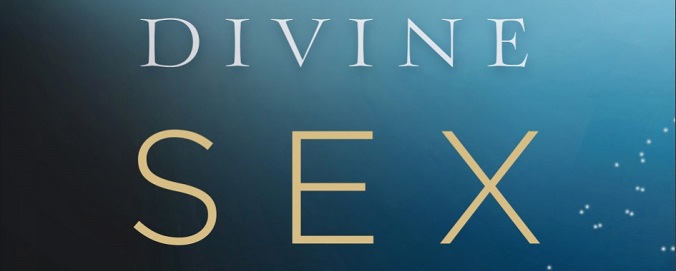
 1) Questions: what didn’t make sense?
1) Questions: what didn’t make sense?

 Sure, it’s associated with politics in this
Sure, it’s associated with politics in this 
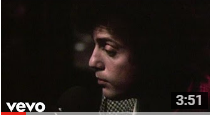

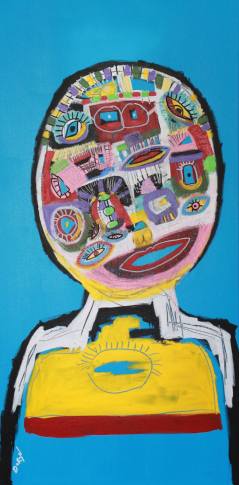
 Over the last three books, we’ve explored the importance of our bodies and imagination in forming kingdom habits (
Over the last three books, we’ve explored the importance of our bodies and imagination in forming kingdom habits ( Ever since Constantine’s ‘vision’ of the Chi-Rho–‘
Ever since Constantine’s ‘vision’ of the Chi-Rho–‘ Enter Brian Walsh and Sylvia Keesmaat with their provocative commentary,
Enter Brian Walsh and Sylvia Keesmaat with their provocative commentary, 


 Endō, a Japanese Catholic, was no stranger to occupying the place of the Other: too foreign, too Oriental, to be understood by the West, and too Christian, too iconoclastic–not to mention insufficiently Buddhist–to be accepted at home. His work of historical fiction is set in 1635 as Portuguese missionaries seek to proselytise the Japanese during a time of extreme persecution. Following rumours of their leader (Ferreira) abandoning his faith, two younger Jesuits (Fr. Rodrigues and his companion Fr. Francisco Garrpe) head to Japan to uncover the truth and shore up the struggling converts. How will this collision between cultures resolve, as each grapples with the other? Will Rodrigues and Garrpe, too, betray their Lord, trampling his crudely formed icon (
Endō, a Japanese Catholic, was no stranger to occupying the place of the Other: too foreign, too Oriental, to be understood by the West, and too Christian, too iconoclastic–not to mention insufficiently Buddhist–to be accepted at home. His work of historical fiction is set in 1635 as Portuguese missionaries seek to proselytise the Japanese during a time of extreme persecution. Following rumours of their leader (Ferreira) abandoning his faith, two younger Jesuits (Fr. Rodrigues and his companion Fr. Francisco Garrpe) head to Japan to uncover the truth and shore up the struggling converts. How will this collision between cultures resolve, as each grapples with the other? Will Rodrigues and Garrpe, too, betray their Lord, trampling his crudely formed icon (

 We must, however, count the cost. Incarnation always leads to the cross.
We must, however, count the cost. Incarnation always leads to the cross. Recapping this first point, then, our times increasingly resemble the novel’s setting. Christianity, once popular and even powerful, is on the outer, and a nation “come of age” is prone–with some good reason–to marginalise and even persecute the Church as a threat to the common (read “secular”) good. As missiologist Lesslie Newbigin argues powerfully (see
Recapping this first point, then, our times increasingly resemble the novel’s setting. Christianity, once popular and even powerful, is on the outer, and a nation “come of age” is prone–with some good reason–to marginalise and even persecute the Church as a threat to the common (read “secular”) good. As missiologist Lesslie Newbigin argues powerfully (see  Mercifully shorter than my first rationale, a second reason this book is timely to discuss is that the much anticipated movie rendering of Silence by Martin Scorsese has come! Thirty years in gestation since first reading, this master director describes its production as his own “pilgrimage”. It’s set to be released in Brisbane on February 16, 2017. God willing, we’ll watch it together on Thursday March 2. Obviously watching the movie, mid cycle in Open Book, comes with a complete “spoiler alert”! That said, his adaptation is receiving
Mercifully shorter than my first rationale, a second reason this book is timely to discuss is that the much anticipated movie rendering of Silence by Martin Scorsese has come! Thirty years in gestation since first reading, this master director describes its production as his own “pilgrimage”. It’s set to be released in Brisbane on February 16, 2017. God willing, we’ll watch it together on Thursday March 2. Obviously watching the movie, mid cycle in Open Book, comes with a complete “spoiler alert”! That said, his adaptation is receiving 
